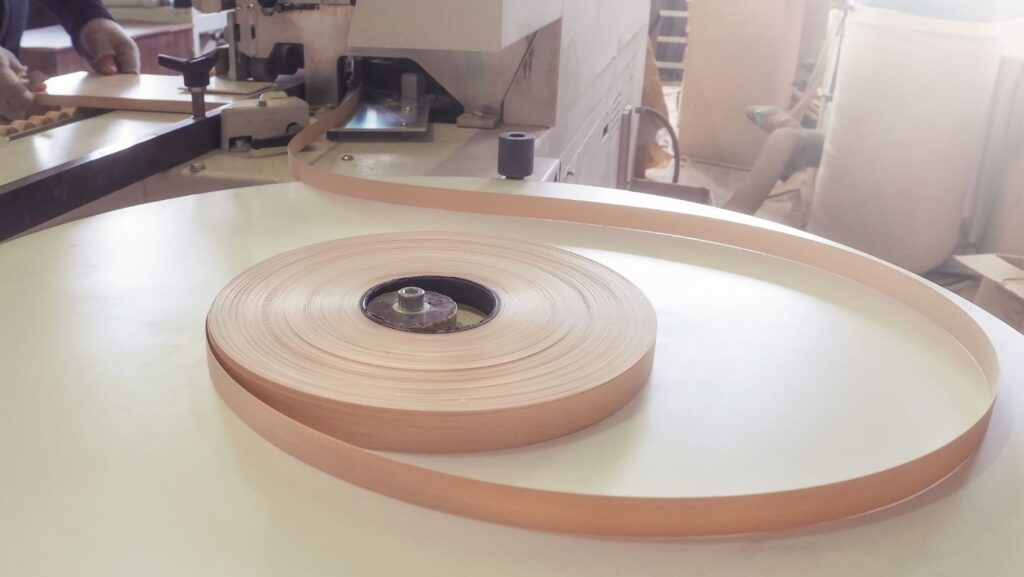
When it comes to crafting beautiful and durable furniture or panels, the smallest details often have the biggest impact. One such detail is veneer edge banding—a technique that not only elevates the aesthetics of a piece but also enhances its longevity. By applying a thin layer of real wood veneer to the edges, this method creates a seamless and polished look that can mimic solid wood without the hefty price tag.
What makes veneer edge banding so remarkable is its versatility. From protecting edges against chips and moisture to enabling intricate designs with curves and bevels, it offers both practical and creative advantages. Whether you’re aiming for a high-end finish or exploring innovative design possibilities, veneer edge banding strikes the perfect balance between style, durability, and cost-effectiveness. It’s a game-changer for anyone looking to achieve stunning, long-lasting results in furniture and interior design.
What Is Veneer Edgebanding?
Veneer edgebanding is a technique used in furniture and panel manufacturing to cover and protect exposed edges of substrates. It involves applying a thin strip of real wood veneer to the edges, creating a seamless, natural appearance that mimics solid wood. This process enhances the overall aesthetics while improving durability.
The veneer strips, available in thicknesses ranging from 0.5mm to 3mm, provide flexibility for various applications.

They come in rolls with widths matching the board’s thickness, ensuring precise coverage. Using veneer edge banding, designers can match surface veneers, create contrasting effects, or achieve artistic designs.
Unlike edging with solid wood, veneer edgebanding is a cost-effective alternative. It maintains high-quality visuals and structural benefits while reducing material costs.
The Benefits of Veneer Edgebanding
Veneer edgebanding offers numerous practical and aesthetic advantages, making it a preferred choice for furniture and panel finishing. By addressing key factors like protection, appearance, and cost, it ensures superior results for manufacturers and designers.
Enhancing Durability and Protection
Veneer edgebanding strengthens the edges of furniture and panels, protecting them from wear, chipping, and moisture. The veneer layer acts as a shield, extending the lifespan of the substrate. This added durability is essential in high-use areas like kitchens, offices, and commercial spaces, where furniture is exposed to heavy usage.
Improving Aesthetics
veneer edge banding creates a seamless transition between the surface and edges, mimicking the appearance of solid wood. Its wide variety of wood species and grain patterns allows perfect matching with surface veneers or the creation of artistic contrasts.

This technique enhances the overall design, offering furniture a polished and professional finish.
Cost-Effectiveness
Veneer edgebanding provides a solid wood look at a fraction of the cost. Using solid wood for edging increases material expenses and labor time, making veneer a budget-friendly alternative. Its efficiency makes it ideal for high-end aesthetics without exceeding project budgets, appealing to both manufacturers and customers.












